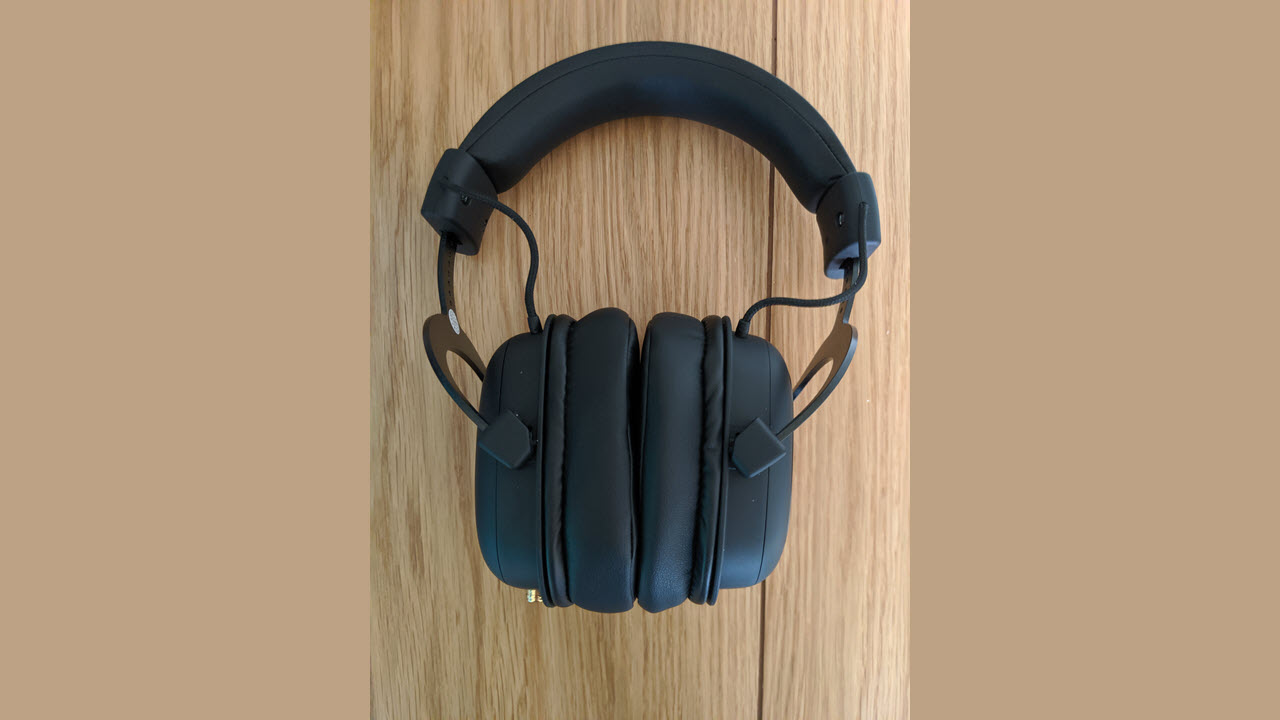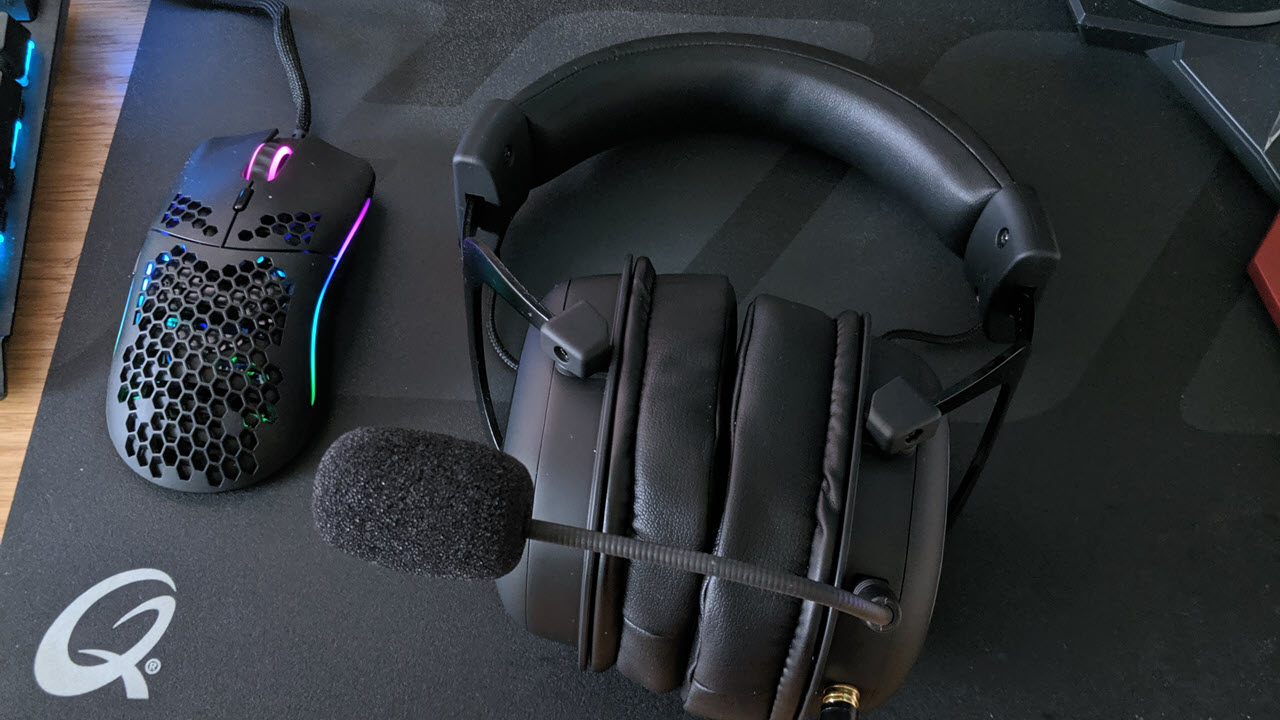Tom's Hardware Verdict
The Riotoro Aviator Classic is definitely comfortable, and when it comes to gaming, the audio delivers a punch. We have concerns about the headset's build quality and longevity though.
Pros
- +
Well-cushioned
- +
Great sound isolation
- +
Powerful bass
- +
Doesn't compromise mid clarity
Cons
- -
Loose mic connection
- -
Underwhelming finish
- -
Audio lacks richness
- -
Can't turn off virtual surround
Why you can trust Tom's Hardware
A flash of bright red accent coloring. A vaguely throwback tribal design logo. A PC peripheral bearing an uncanny resemblance to another product on the market. I predict a Riotoro.
The U.S.-based newcomer to PC gaming kit is making a big push to expand its range lately, going deeper into the PC cases and power supplies it entered the market with but also busting out into gaming keyboards and gaming mice, like the Riotoro Nadix. But can the company make one of the best gaming headsets?
Stepping once again into the great unknown is the Riotoro Aviator Classic the company's first PC gaming headset (also works with PlayStation, Xbox, Nintendo Switch and mobile). Looks a bit familiar though, doesn't it? There's more than a whiff of the very popular HyperX Cloud series to it, which features the popular HyperX Cloud Alpha.
Can we really expect similar levels of comfort and performance from the Aviator Classic? At $80 as of writing, it's slightly cheaper than the HyperX Cloud Alpha, which is usually about $100, but considerably more than Corsair's impressive budget range HS50 and HS35 stereo cans. What do you get for the outlay? Virtual 7.1 surround, a detachable mic and the choice of USB or 3.5mm input. But while the headset nails the comfort category, it has room to grow in others.
Riotoro Aviator Classic Specifications
| Driver Type | 50mm |
| Impedance | Not disclosed |
| Frequency Response | 20 - 20,000 Hz |
| Microphone Type | Detachable, noise-cancelling |
| Connectivity | 3.5mm or USB Type-A |
| Cable | 7.2 foot / 2.2m braided cable and USB adapter |
| Weight | 0.8 pounds / 362.9g |
| Lighting | None |
Design and Comfort
Let's start with comfort. Just as they appear, these are incredibly well-padded and comfy cans. The Aviator Classic's earcups offer as thick a layer of memory foam padding as we've ever seen on a headset and are finished in leatherette. The contact pad material has a significant effect on the overall sound of a headset, and I prefer leatherette for its fantastic noise isolation. Sure, fabric cloth pads would offer greater breathability, but I'll take that trade-off in favor of a sealed tight chamber around my ears that let those frequencies bounce around beautifully.
The Aviator Classic felt slightly heavier on my head than the 11.9-ounce Cloud Alpha, which isn't particularly lightweight itself. Thankfully, the amount of cushioning on the Aviator Classic's headband kept discomfort at bay. It also helped that the headband is nice and broad, distributing the weight over a wider area, while the horizontal clamping force of the aluminum band affixed the ear cups to my head firmly, yet pleasantly. The elongated cups proved excellent at sound isolation and external noise cancellation too.
The build quality and finish is where the Aviator Classic is shown up. The headband is worryingly flimsy and flexible; it definitely wouldn't survive being accidentally sat on. The metal hinges, meanwhile, are a bit noisier than is the norm, and the black finish looks quite basic, lacking any of the brushing you'd often see on similarly priced -- and even cheaper -- headsets. The earcups' matte finish also looks a little cheap. In short, after rolling these around in your hands for a while, you'd feel like these are budget cans.
Get Tom's Hardware's best news and in-depth reviews, straight to your inbox.
A gold-banded 3.5mm connector connects to a red, braided cable. I actually like the cable, despite my usual aversion to bright colors in gaming peripherals. That red cable then attaches to either a longer USB cable with an inline control or a black splitter cable with 3.5mm audio and mic in connections. Both mic and volume mute buttons are on the USB inline, but they don't illuminate when toggled, so it can sometimes be tricky to figure out whether your mic's actually broadcasting or not . A little light here would have been handy to remedy this.
In addition, the volume up and down buttons only increase or decrease volume by increments of two in Windows. The feature's supposed to make it so it doesn't require a lot of presses to make significant volume changes, but I found it to a small nuisance.
If you opt for a 3.5mm connection to your PC you lose out on the inline controls, in addition the virtual 7.1 surround.
All in all, despite a few odd kinks, we're really impressed by the comfort of this design. And best of all, it tees the Aviator Classic up for some great sound.
Audio Performance
Sound and comfort don't exist in separate vacuums. However nicely the driver's tuned, however expertly the EQ shaped, the point of contact around the ears often proves the deciding factor in headphones. If sound leaks out around the rim of the earcup, you'll lose the tightness and punch of your bass and end up with a murky sound. And that's the advantage of a design like the Aviator Classic. The foam cushions sit incredibly snug and tight without being uncomfortable around the ears, creating a sealed chamber. Aviation-style headphone designs like that of Riotoro's cans are superior at this exact feat, and if you trace the line of inspiration back far enough, you end up back at the original QPad QH90s, which HyperX acquired the design license to and subsequently built its Cloud line. In fact, the QPad looked at flight headsets, which pilots use in noisy cockpits to communicate crucial information with ATC and flight staff, for its original design.
You can see the connection. By blocking out external noise, aviation-style headphones immerse you in the sound you want to hear, and what's more they afford the frequencies that build those sounds the space to resonate without escaping. These Riotoro cans are as good at this as any headset we've tested.
The headset is billed as offering virtual 7.1 surround sound. However, there's no toggle for the feature, neither in software or on the headset itself. Therefore, we can only deduce that virtual surround sound is always on when you're using the Aviator Classic.
During testing, the low-end came in powerfully and defined, giving space for the mids to voice unimpeded. The highs come through quite clearly too, and although the emphasis in the EQ curve is definitely on creating that mighty bass response, it's a clear enough soundscape that you can play CS:GO, Apex Legends or PUBG without the need to boost the sound of footsteps via software.
However, compared to the slightly pricier HyperX Cloud Alpha and the HyperX Cloud II , the Aviator's sound output doesn't sound as rich. It's subtle, but there's a slight artifice to the whole sound that's especially noticeable when listening to music you're familiar with. It's a similar sound to applying a software EQ profile -- impressive at first, but a touch overzealous once your ears bed in and get used to it.
The accompanying software is extremely limited and doesn't seem to offer any means of toggling the virtual 7.1 surround on or off, and that's likely the culprit of that artificial ring to the sound. It would have been great to include an option to turn this off in order to tighten up the sound and remove that reverberant quality you typically get with virtual surround algorithms.
Ultimately, we're left with a headset that sounds really punchy in games but lacks just a little refinement to be considered for everything else.
The Aviator Classic's microphone sounded serviceable enough, but it never seemed firmly affixed when I attached it. There was worryingly little resistance when detaching it too, which opens the door to the possibility of knocking it loose mid-game and going radio silent.
Software
Riotoro provides its own app for managing the Aviator Classic's settings, and it's no looker. An extremely basic UI reminiscent of the Windows XP glory days offers manual volume adjustment, individual volume adjustment on both left and right sides, a mic mute button and gain level.
You also get a handful of presets, namely Hi-fi, Movie, Music and Manual. These seem to alter the EQ profile, but they're quite subtle in their variation from each other.
Bottom Line
We're not sure how much rough and tumble it can take, but Riotoro's debut headset also gets the feel and sound right out of the box.
Taking its cues from aviation-style headsets designed to block out external noise, the Aviator Classic uses generous padding to seal your ears in tight and then pump some powerful, bass-heavy audio into them. We have concerns about the loose mic connection in our review sample and worry that it'll suffer some wear and tear after months of daily use. And we also wish there was an option to turn off virtual surround sound.
For alternatives, the HyperX Cloud Alpha isn't much more and is our most recommended headset. and the Corsair HS60 Pro Surround shows strong build quality.
But for $80 as of writing, the Riotoro Aviator Classic is a decent proposition.

